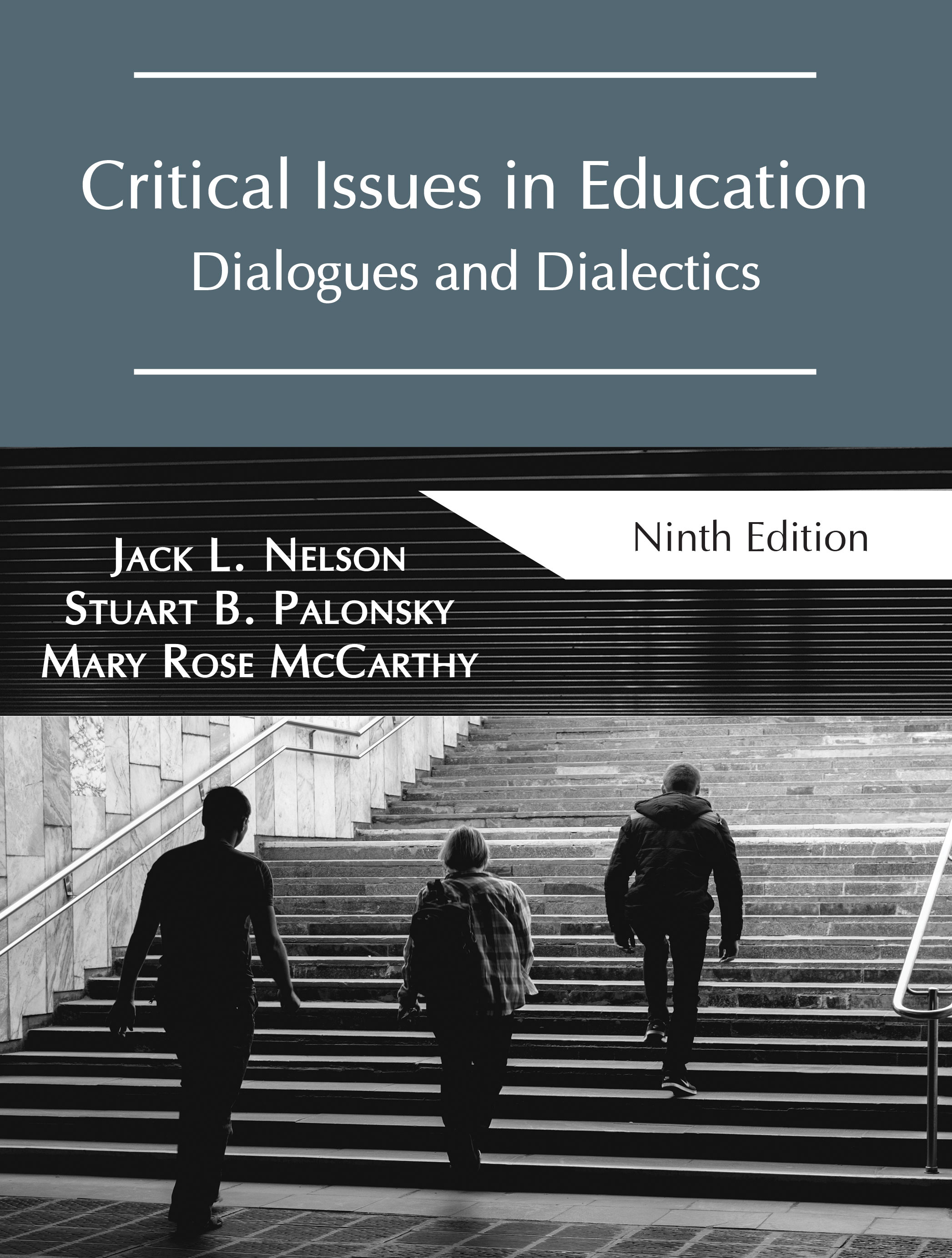“This text provides a broad perspective that stimulates problem solving and high-level thinking from students. It offers relevant and real-world conversations and decision making.” — James Sirk, Purdue University, Fort Wayne
“Up-to-date material about the issues facing educators today. The balanced viewpoints are valuable and lend themselves very well to robust debates and discussions.” — Elizabeth Schultz, Southern Maine Community College

391 pages, $55.95 list
1-4786-4045-6
978-1-4786-4045-5
© 2021
paperback
eBook availability
Critical Issues in Education
Dialogues and Dialectics
Ninth Edition
Critical Issues in Education examines three questions that are at the core of the education debate in the United States: What interests should schools serve? What knowledge should schools teach? How do we develop the human environment of schools? When answering these queries the authors advocate the use of critical thinking, which includes dialogue and dialectic reasoning. Dynamic and interactive, dialogue requires listening and assessment, while dialectic stimulates the development of a creative response that encompasses both sides of an issue. When applied, these approaches engender an informative and stimulating discussion.
In order to explore the depth of current educational issues, the Ninth Edition considers 15 topics, providing supporting evidence and reasoning for two divergent views. These issues include violence in schools, the role of technology, gender equity, multiculturalism, inclusion and disability, and school choice. Both civic and professional discussions regarding improvements will have consequences for students, teachers, and society. As a result, educational views and the social landscape in which they reside deserve critical study.
In order to explore the depth of current educational issues, the Ninth Edition considers 15 topics, providing supporting evidence and reasoning for two divergent views. These issues include violence in schools, the role of technology, gender equity, multiculturalism, inclusion and disability, and school choice. Both civic and professional discussions regarding improvements will have consequences for students, teachers, and society. As a result, educational views and the social landscape in which they reside deserve critical study.
Reactions
1. Critical Issues and Critical Thinking
Part One: WHOSE INTERESTS SHOULD SCHOOL SERVE? Justice and Equity
2. Family Choice in Education: Public Interest or Private Good?
3. Financing Schools: Equity or Privilege
4. Privatization, Commercialization, and the Business of School: Complementing or Competing Interests
5. Religion and Public Schools: Free Expression or Separation
6. Gender Equity: Eliminating Discrimination or Accommodating Difference
7. Immigrants and the Schools: Unfair Burden or Business as Usual
Part Two: WHAT SHOULD BE TAUGHT? Knowledge and Literacy
8. The Academic Achievement Gap and the Standards Movement: Real Change or Badly Flawed Policy
9. Values/Character Education: Traditional or Liberational
10. Multicultural Education: Democratic or Divisive
11. Technology and Learning: Enabling or Subverting
Part Three: THE SCHOOL COMMUNITY: Individuals and Environments
12. Discipline and Justice: Zero Tolerance or Discretionary Practices
13. Violence in Schools: Preventable or Beyond School Control
14. Inclusion and Disability: Common or Special Education
15. Teachers, Unions, and the Profession
16. Intellectual Freedom and Critical Thinking: Teachers, Students, and Society
Part One: WHOSE INTERESTS SHOULD SCHOOL SERVE? Justice and Equity
2. Family Choice in Education: Public Interest or Private Good?
3. Financing Schools: Equity or Privilege
4. Privatization, Commercialization, and the Business of School: Complementing or Competing Interests
5. Religion and Public Schools: Free Expression or Separation
6. Gender Equity: Eliminating Discrimination or Accommodating Difference
7. Immigrants and the Schools: Unfair Burden or Business as Usual
Part Two: WHAT SHOULD BE TAUGHT? Knowledge and Literacy
8. The Academic Achievement Gap and the Standards Movement: Real Change or Badly Flawed Policy
9. Values/Character Education: Traditional or Liberational
10. Multicultural Education: Democratic or Divisive
11. Technology and Learning: Enabling or Subverting
Part Three: THE SCHOOL COMMUNITY: Individuals and Environments
12. Discipline and Justice: Zero Tolerance or Discretionary Practices
13. Violence in Schools: Preventable or Beyond School Control
14. Inclusion and Disability: Common or Special Education
15. Teachers, Unions, and the Profession
16. Intellectual Freedom and Critical Thinking: Teachers, Students, and Society